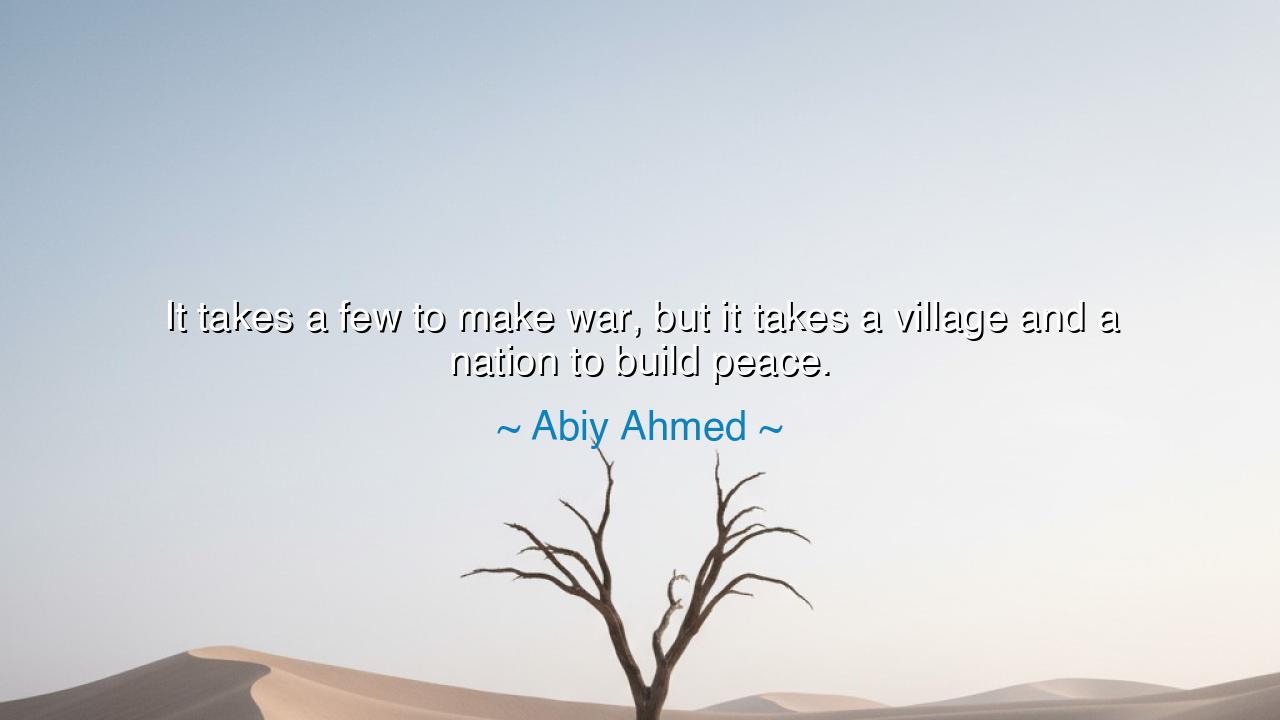
It takes a few to make war, but it takes a village and a nation






Hear the voice of Abiy Ahmed, son of Ethiopia and Nobel laureate of peace, who declared: “It takes a few to make war, but it takes a village and a nation to build peace.” These words resound like the echo of a drum across valleys and mountains, for they unveil the ancient truth that destruction is easy, but creation is hard. A handful of leaders, drunk with ambition, can summon flames of battle with a word. Yet to restore harmony after the fire, to rebuild trust, to plant the seeds of peace—that work demands the labor of multitudes, bound together in common purpose.
The ancients knew this bitter truth. In every age, kings, generals, or conspirators—sometimes only a handful—threw nations into bloodshed. But when the swords grew silent, it was the mothers, the children, the workers, and the healers who bore the burden of rebuilding. War is born in haste, but peace is carved slowly, like stone by water, requiring patience, sacrifice, and the hands of many. Abiy’s words remind us that while conflict may be the decision of a few, peace is the responsibility of all.
History itself speaks. After the Second World War, it was not only the generals or statesmen who shaped the peace—it was entire peoples. In villages across Europe, citizens rebuilt shattered homes brick by brick. Farmers sowed new crops in fields scorched by bombs. Nations forged institutions like the United Nations, not from the will of a few, but from the collective longing of humanity for stability. Here we see Abiy’s wisdom: war was unleashed by dictators and their circles, but peace was carried forth by the sweat and hope of nations.
The meaning also runs deeper: peace is not merely the absence of fighting. It is justice restored, wounds tended, hearts reconciled. This cannot be done by one leader alone, nor by a treaty signed in ink. It requires a village—neighbors forgiving neighbors, communities opening their hands instead of clenching fists. And it requires a nation—laws built on fairness, opportunities shared with equity, institutions strong enough to prevent hatred from rising again.
Think also of Nelson Mandela and South Africa. Apartheid was a war waged by a few against many. Its end came not only because of one man’s release from prison, but because an entire nation chose reconciliation over vengeance. The Truth and Reconciliation Commission invited people across the land to speak, to forgive, to heal. It was the village that bore witness, and the nation that decided to walk together into a new dawn. Without such collective will, the peace could not have endured.
Thus the lesson is heroic: do not wait for leaders alone to forge peace. Peace is a labor that belongs to you as much as to them. Each act of kindness, each word of reconciliation, each effort to heal division is a brick laid in the wall of peace. If only a few can break the world, then many together can mend it. The task is long, but it is sacred, for it secures the inheritance of generations.
So, children of tomorrow, remember these words: “It takes a few to make war, but it takes a village and a nation to build peace.” When you see conflict, ask not only what rulers will do—ask what you will do. Speak peace where there is anger, work for justice where there is oppression, and join hands with others to heal what war has broken. For though the few may kindle the fire, it is the many who must quench it, and only together can humanity live in the harmony it was always meant to know.






AAdministratorAdministrator
Welcome, honored guests. Please leave a comment, we will respond soon